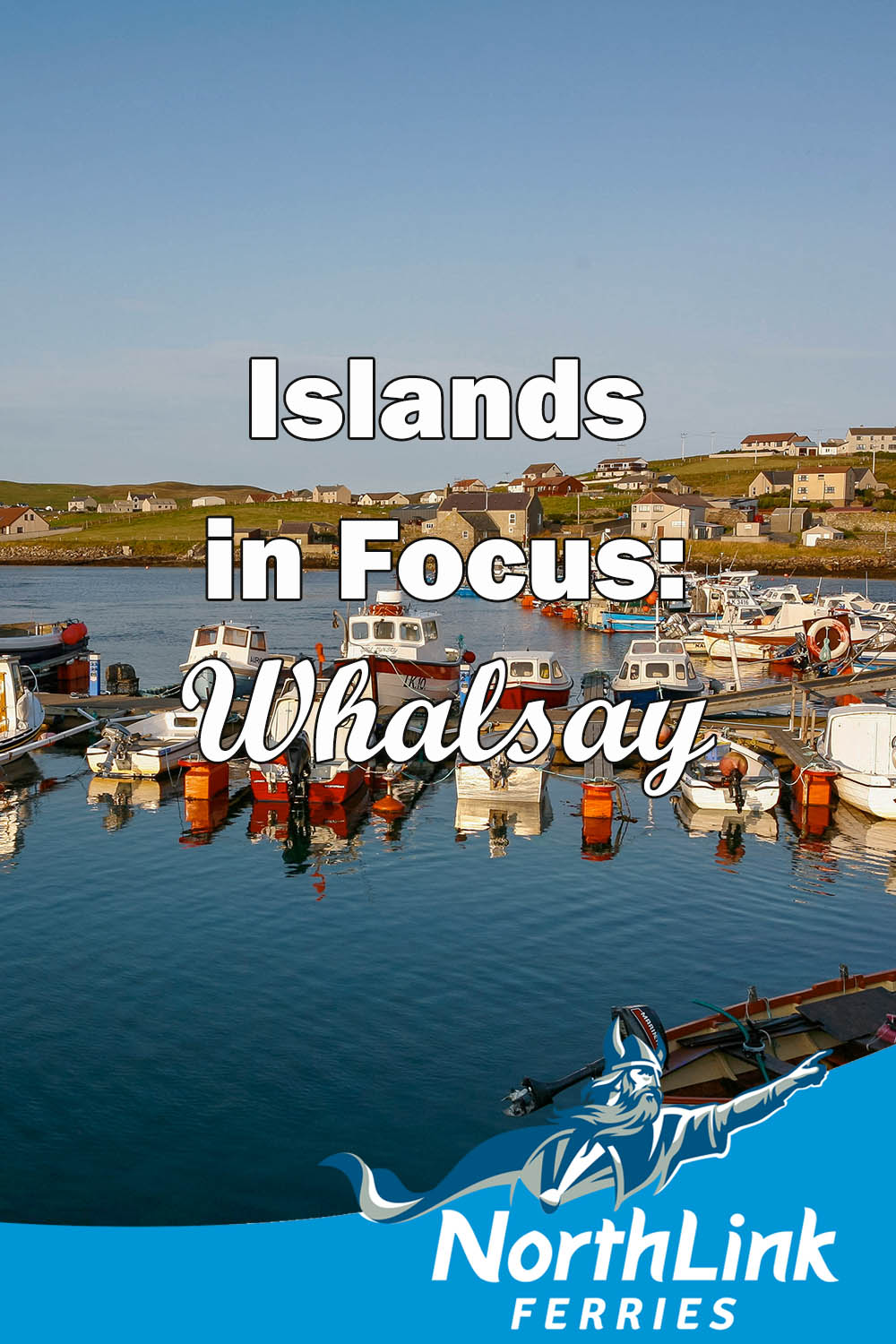Island in Focus: Whalsay
One of Shetland’s smaller islands, Whalsay, with its rolling fields, enthralling coastal walks and magnificent scenery, it is sure to leave a lasting impression. Located to the east of mainland Shetland, Whalsay is the sixth largest of Shetland’s islands.
Whalsay is home to the most northerly golf course in Britain. Located at the northern end of the island in Skaw, it is a challenging 18-hole golf course that is enclosed by the sea on all sides and even has an airstrip running through one of its holes!
When the Vikings arrived in Shetland over 1,000 years ago, they named the island Whalsay from the Old Norse term ‘Hvalsey’ meaning ‘whale island’. In the 19th century, fishermen affectionately nicknamed Whalsay the ‘bonny isle’ due to its vibrant display of wildflowers that blanket the island in spring and summer, as few animals graze here. One of Shetland’s rarest plants, Sea Aster, even grows on the eastern cliffs of Whalsay.
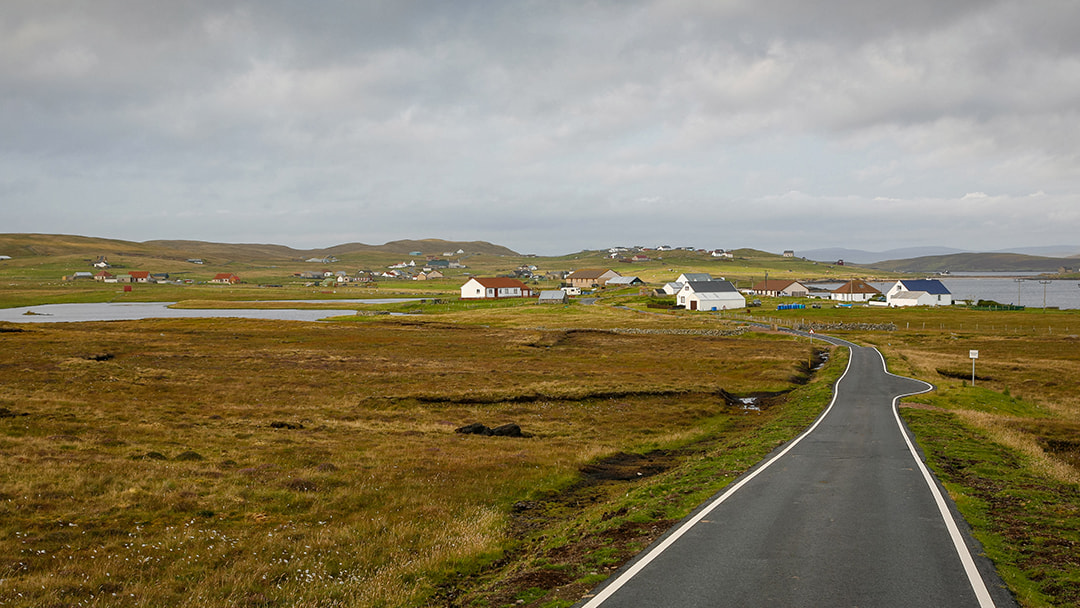
The residents of Whalsay have historically focused on the sea due to challenges with the land – particularly after the island was acquired by the Bruce family in the 1600s, who then subsequently oppressed its inhabitants for 300 years. Although crofting has always been present here, Whalsay’s economy is predominantly driven by fishing. The islanders own some of the largest trawlers in the Shetland fleet and are historically renowned for their sailing abilities.
There are approximately 1,000 people living on Whalsay, making it one of Shetland’s more densely populated islands. Whalsay is equipped with local shops, museums, a leisure centre with a swimming pool and even a golf course!
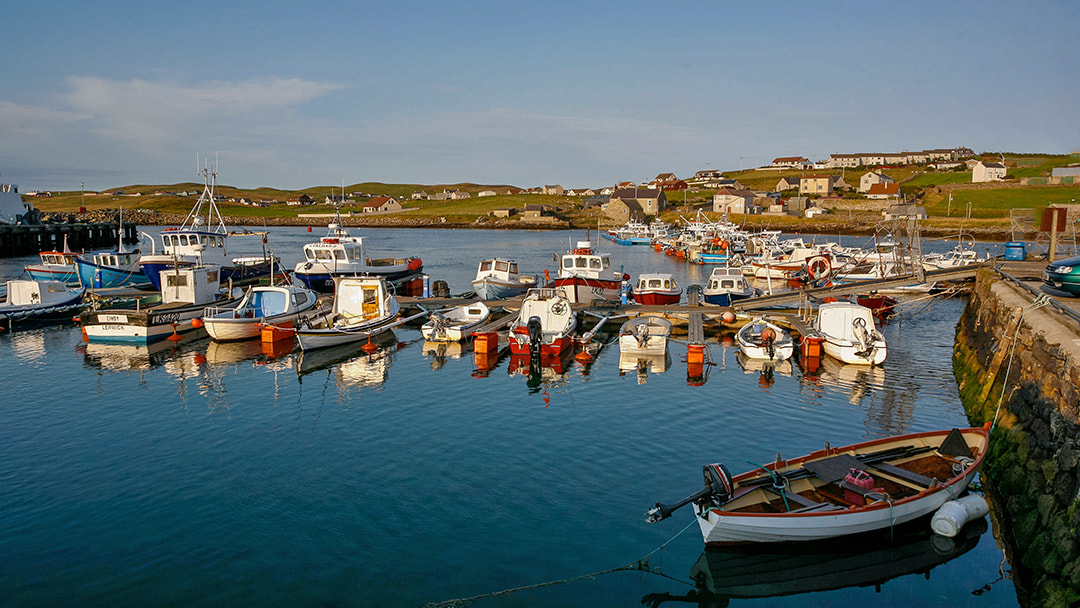
Symbister Village and Harbour
Symbister, situated on the southwest corner of Whalsay, is the island’s largest village and the arrival port for visitors sailing over from the mainland. The village’s central feature is its bustling marina, which accommodates a mix of small fishing boats, recreational crafts, and some of the largest deep-sea trawlers in Europe.
The harbour is naturally sheltered from the north by West Linga, providing a safe place for the fishing fleet to dock. Whalsay has a deep-rooted fishing legacy spanning back centuries and is still a proud fishing community today.
Symbister village offers a range of amenities, including a post office, various shops, a community hall, a police station, a medical centre, and the Whalsay Leisure Centre. There is also a Regatta held here in the last week of July which promises a delightful experience for all attendees.
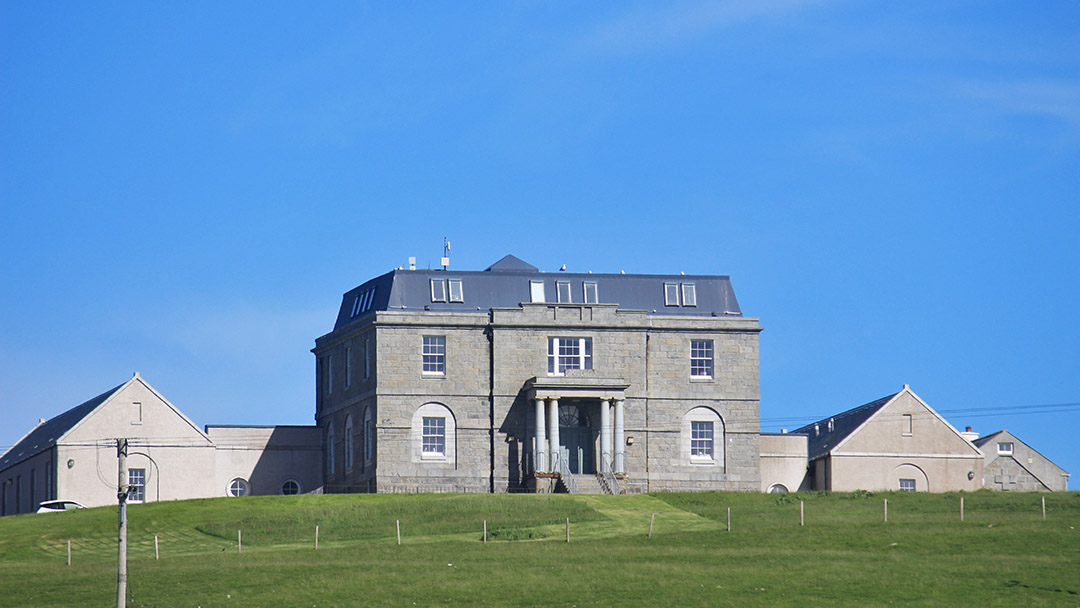
Symbister House
Overlooking the village of Symbister is Symbister House, which was constructed in 1823 by Robert Bruce. The Bruce family, who became lairds of the island in the 16th century and remained in control for nearly 300 years, left a lasting legacy with this elegant Georgian structure.
Built from distinctive granite, Symbister House stands as a testament to the grandeur of its time. Despite the use of forced labour, its construction costs exceeded £30,000—a staggering sum in the early 19th century. Unfortunately, the estate’s finances never fully recovered, leading to its decline after the death of the last laird in 1944.
Falling into disuse, the house found a new purpose in 1964 as the Whalsay School. Today, it continues to serve the community and is now classified as a Category B listed building, signifying its important heritage.
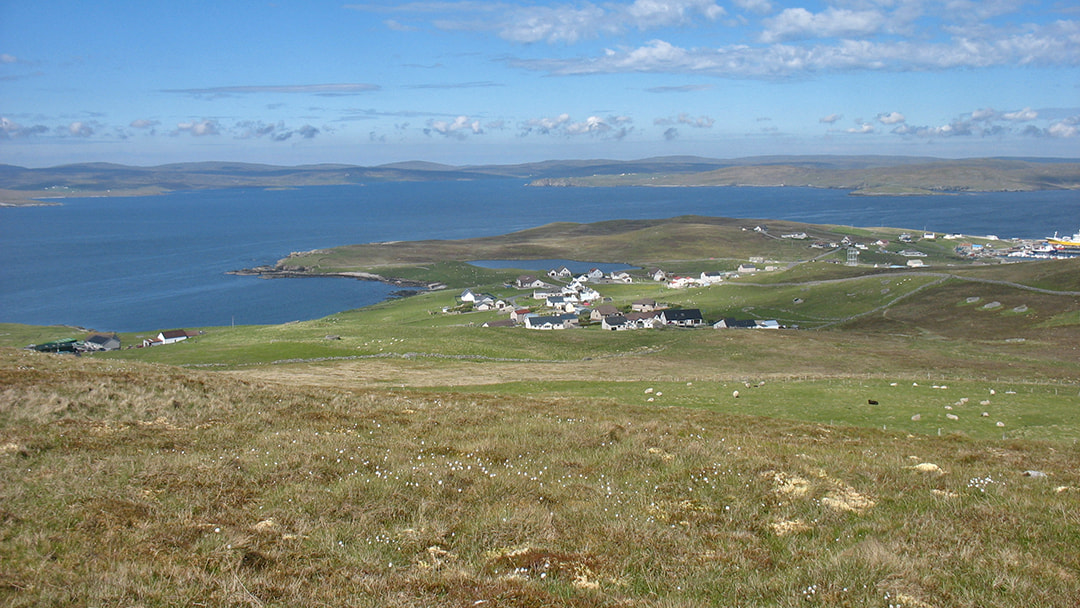
The Ward of Clett
The Ward of Clett is the highest point on the island of Whalsay, rising almost 400-feet-high. Clett offers sweeping panoramic views of the surrounding North Sea and the rugged Shetland landscape, making it a favourite spot for walking on the island.
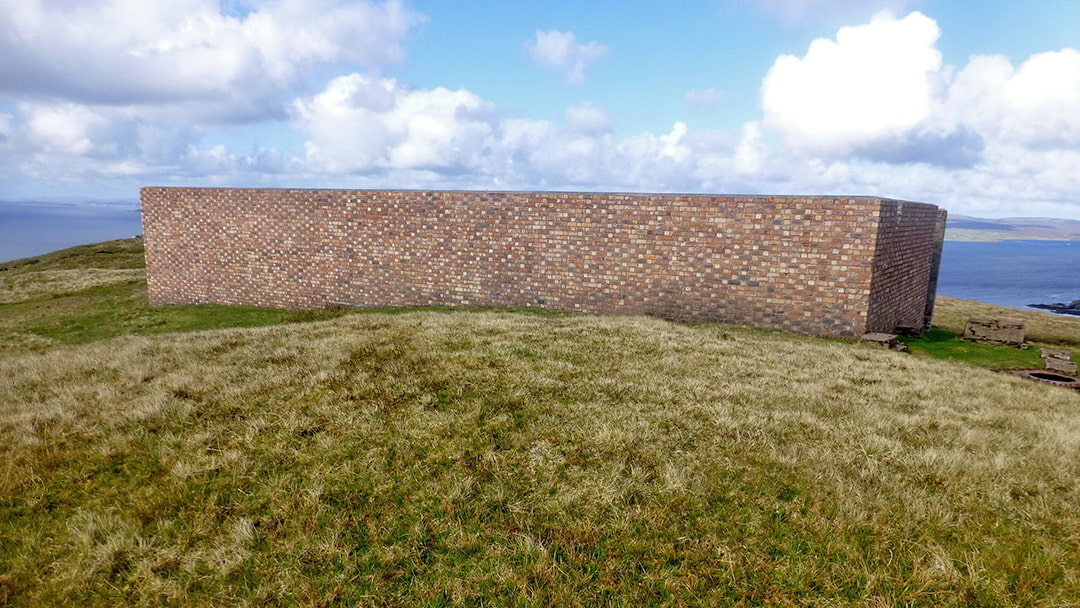
The summit of the Ward of Clett is not only an incredible viewpoint but is also where you’ll find the ruins of a chain home radar station, which visitors are free to explore. During the Second World War, this radar station played an important role in Britain’s defence network as it was built to detect low-flying aircraft and protect Britain from German air attacks.
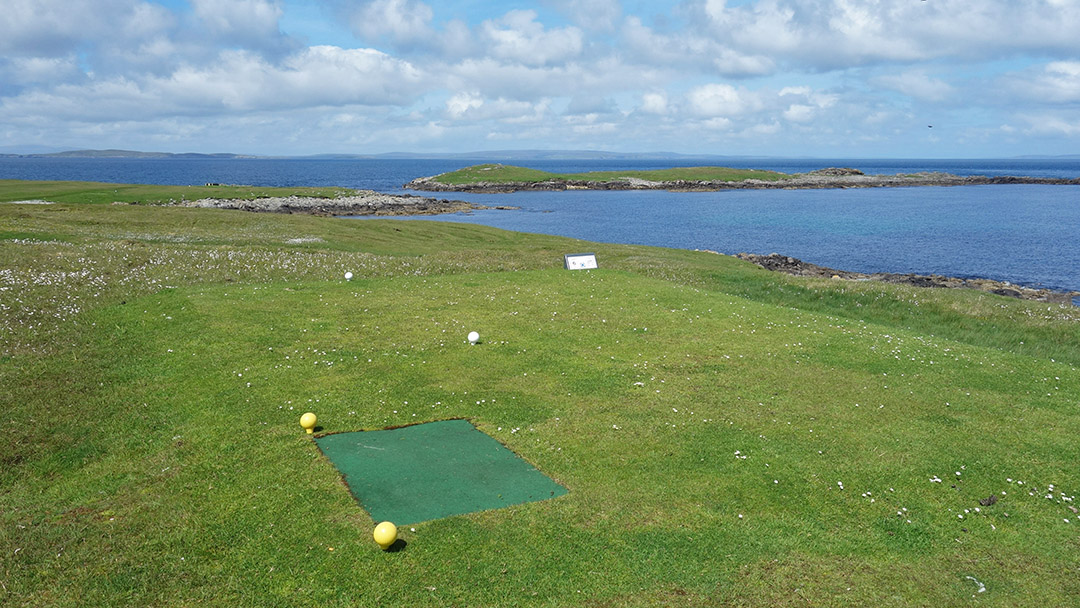
Whalsay Golf Course
Did you know that Whalsay is home to the UK’s most northerly golf course? Located at the northern end of the island in Skaw, it is a challenging 18-hole golf course that is enclosed by the sea on all sides. The exposed moorland setting and uninterupted sea views make for a truly memorable round of golf.
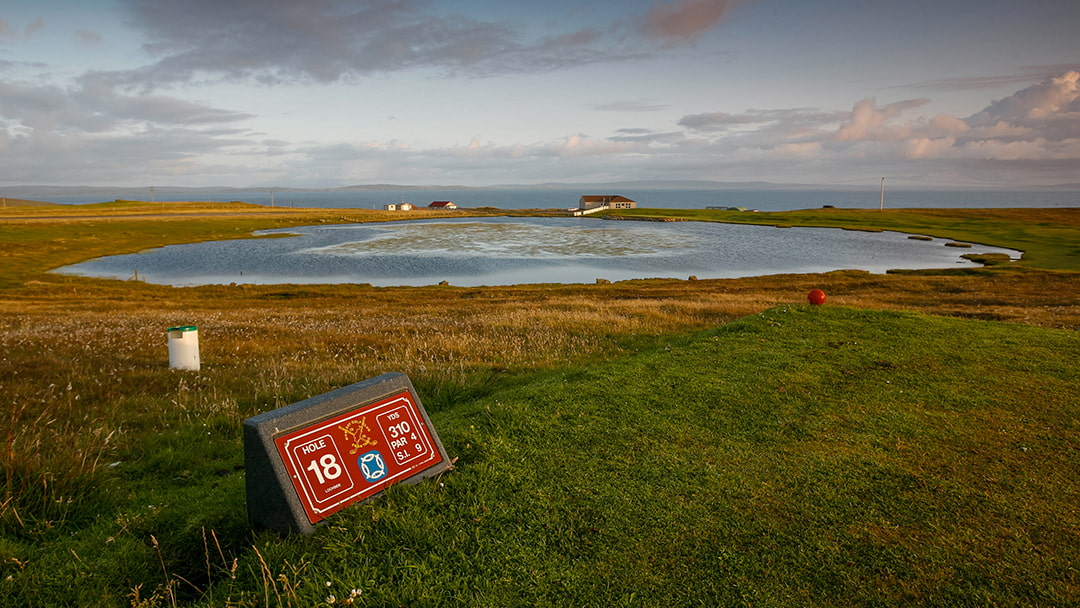
Whalsay golf course stands out not only for its prime location but also for its unusual feature: an airstrip hazard – meaning play must stop if there’s an incoming charter flight. Whether you’re a seasoned golfer or a beginner, you’ll find the course both exciting and demanding. And even if golf isn’t your game, walking the course to take in the stunning coastal views is lovely in itself.
For more information on green fees and tee times, please visit https://www.whalsaygolfclub.co.uk/.
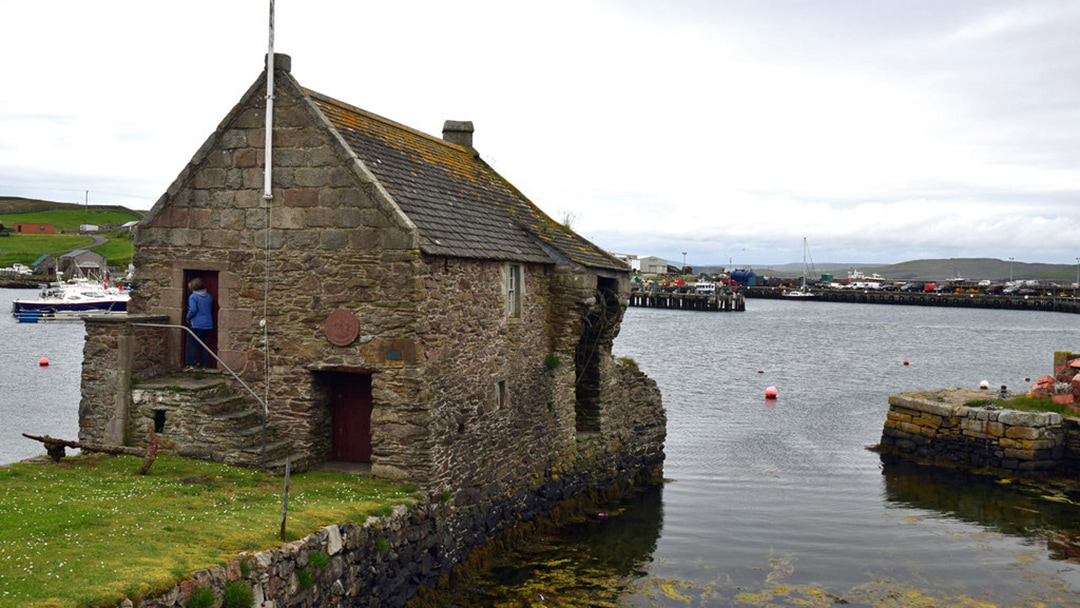
Pier House Museum
Between the 15th and 17th centuries, Whalsay, along with the rest of Shetland, emerged as a significant trading port for the Hanseatic League. Every year, ships from Hamburg, Bremen, and Lubeck arrived laden with seeds, cloth, iron tools, salt, spirits, luxury goods, and hard currency; and in exchange, they acquired Shetland’s prized fish.
The Hanseatic League’s trade with Shetland is vividly displayed in a museum housed in a restored 17th century trading booth on Symbister Pier. This museum offers a fascinating glimpse into the lives of these traders, detailing how German merchants dominated the salt fish trade for centuries. The Pier House Museum, open year-round, can be accessed by obtaining a key from the JWJ shop just across the road.
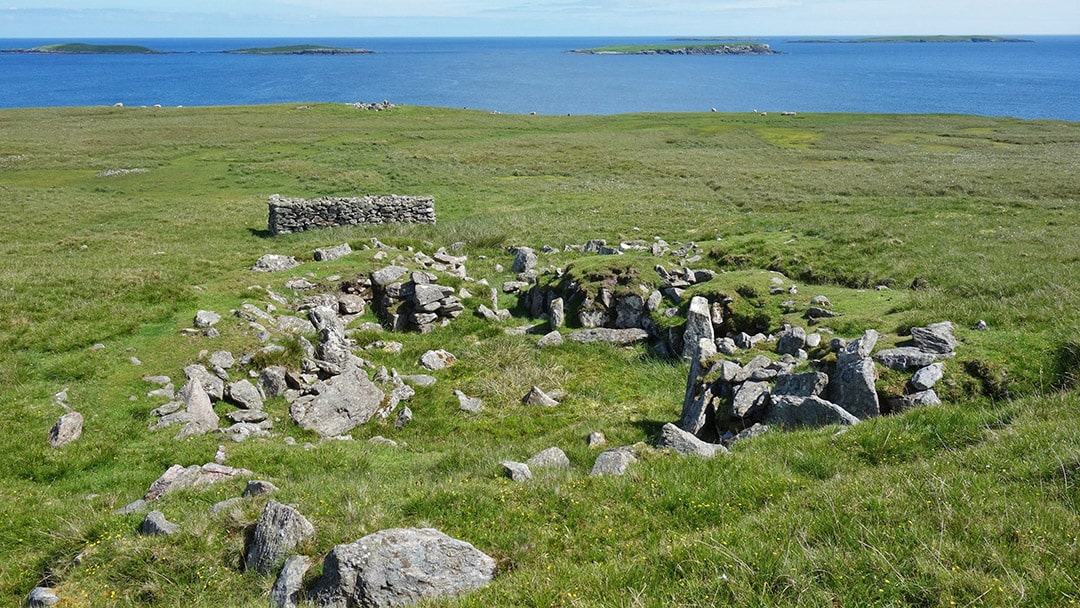
Benie Hoose and the Standing Stones of Yoxie
Whalsay, an island rich in prehistoric heritage, is home to numerous ancient sites, including hilltop burial cairns, prehistoric field boundaries, and notable Neolithic houses such as Yoxie and the Benie Hoose. Upon initial excavation, the Yoxie ruins were believed to be standing stones. However they are now understood to be the remains of a Neolithic farmstead, similar to Benie Hoose.
The Neolithic houses of Yoxie and the Benie Hoose are significant monuments located at Pettigarths Field on the island’s northeastern side. The community that built these houses also constructed a small burial site overlooking their fields.
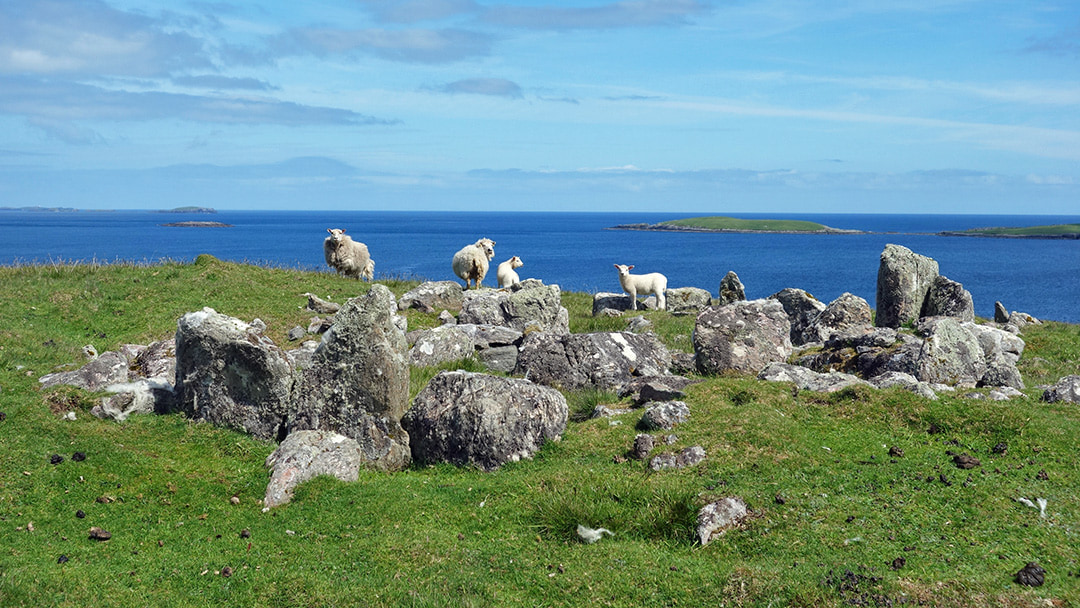
There is speculation regarding where Benie Hoose received its name from. Some assume that it is a local term meaning ‘bone house’ or graveyard, whilst others believe it is from the Old Norse ‘Boenhus’ meaning ‘house of prayer’ or chapel.
A significant number of artifacts were found at the Benie Hoose, and its excavation in the 1950s revealed an unusual quantity of tools. There were around 1,800 artefacts discovered here, including axes, hammer stones, hammer pounders, picks, pot lids, pot shards and a steatite (soapstone) pot handle.
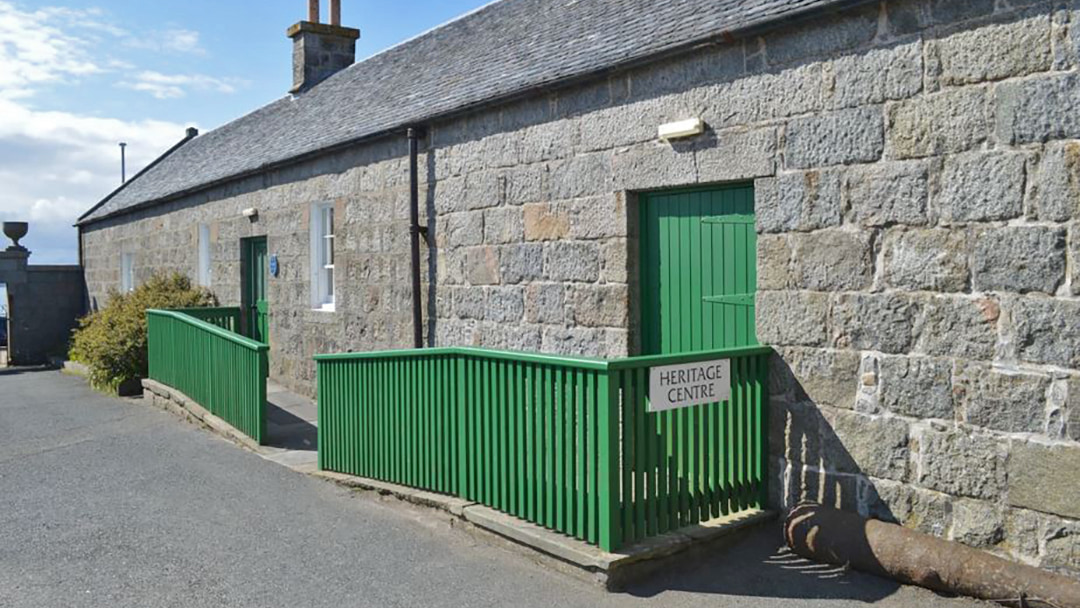
Whalsay Heritage and Community Centre
Established in 2006, the Whalsay Heritage & Community Centre serves as a vibrant hub for preserving and celebrating the island’s rich history. Located in the farm buildings that once supported the grand Symbister House, the Centre is a treasure trove of artifacts and stories from thousands of years of island habitation.
Each year, in addition to its permanent exhibitions on the islands’ fishing heritage and the Lairds of Whalsay, the centre displays rotating exhibitions on various aspects of Shetland and Whalsay history, which has included Fair Isle knitting, life in Whalsay during the 1950s and 60s, and the First World War.
Please note that the Whalsay Heritage and Community Centre operates with limited opening times. For more information on opening times and admission prices, please visit: https://www.whalsayheritage.co.uk/.
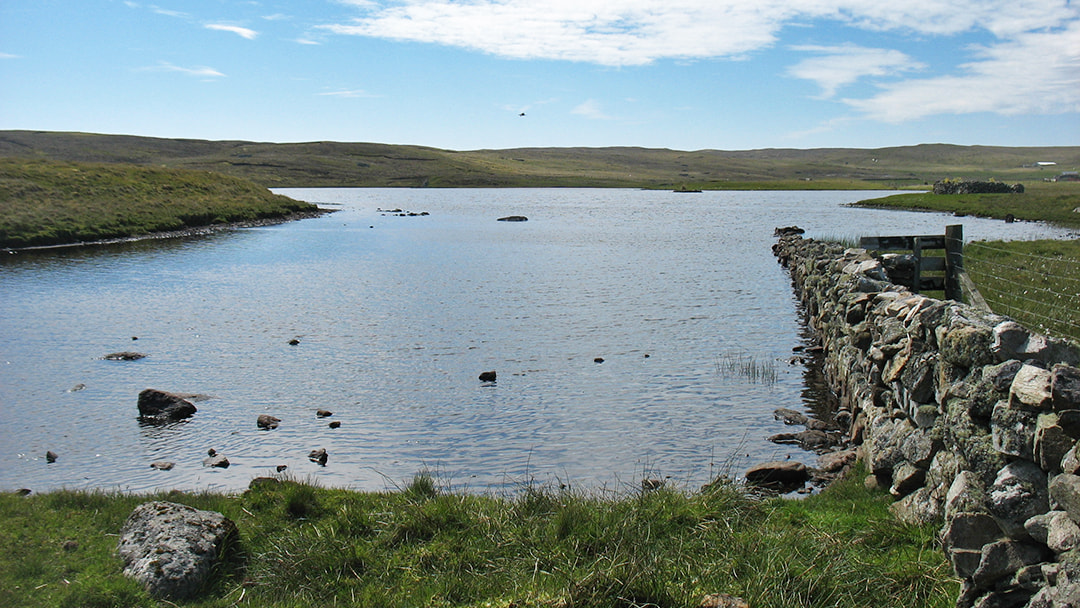
Vatshoull Loch
Located just south of Brough, Vatshoull Loch offers a delightful mile-long walk that’s perfect for families and individuals of all ages. This flat trail, with its well-maintained surface, provides an easy and enjoyable stroll throughout the peaceful and picturesque surroundings.
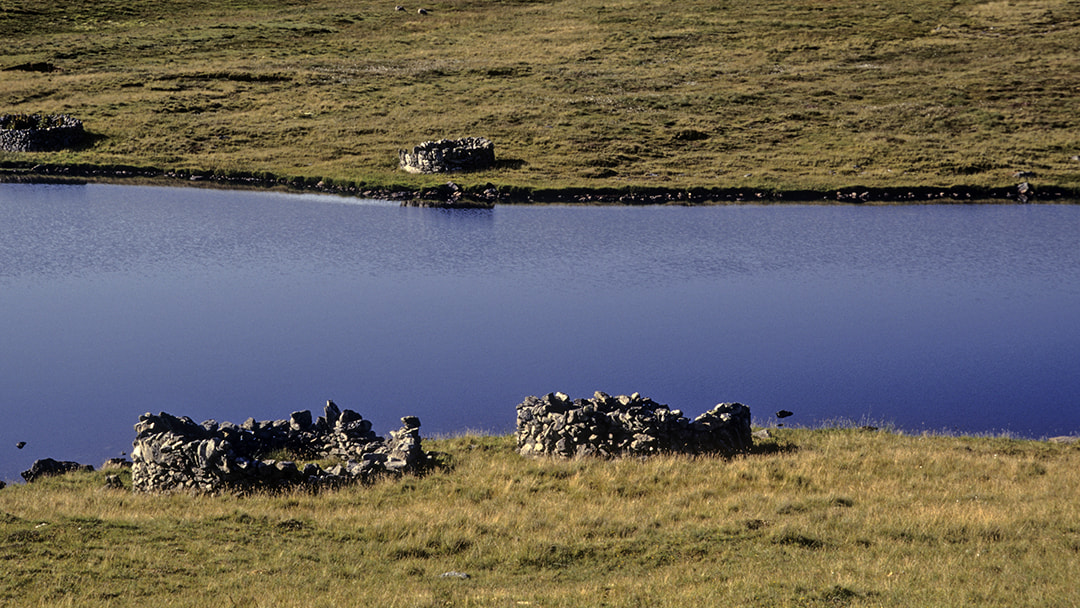
As you wander around the loch, keep an eye out for numerous planticrubs—structures once used to shelter seedling crops from harsh weather. Today, one of these planticrubs has been repurposed as a sheltered seating area, offering a unique spot to rest and take in the views. The loch and its surrounding banks are home to a variety of bird species, making it a great location for birdwatching.
The Shoard Charity Shop
The Shoard Charity Shop can be found in the small settlement of Brough and offers an eclectic mix of second-hand goods, from clothing and books to household items and other unique finds.
The shop, which is open between 2pm-4pm on Wednesdays, Thursdays and Saturdays, donates its proceeds to the Whalsay Disability and Special Needs Support Group. They have been supporting people with disabilities since 1989, giving reason to the shop’s name ‘Shoard’ meaning to support or prop-up.
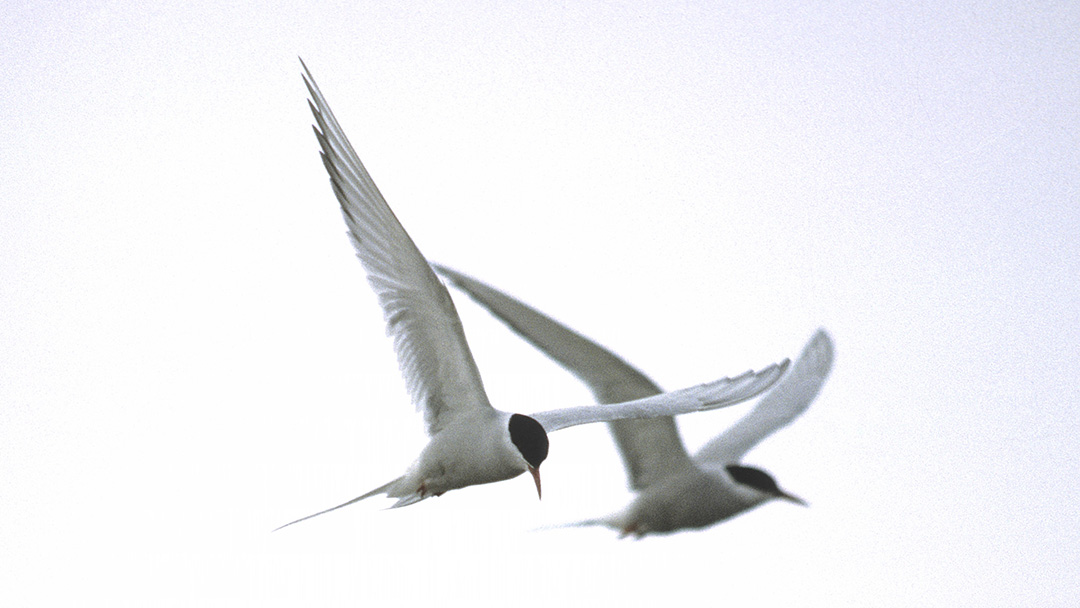
Wildlife in Whalsay
As mentioned, the Vikings named Whalsay which translates from Old Norse to ‘whale island’ as the waters around Whalsay are ideal for spotting porpoises, dolphins, minke whales and orcas. There are plentiful excellent viewing opportunities for these marine mammals around the tidal sounds and off-lying rocks – make sure to keep a lookout whilst travelling across on the ferry!
Whalsay offers encounters with most of Shetland’s seabirds – including puffins! Other seabirds commonly seen here include storm petrels, little auks, great northern divers, arctic terns as well as ducks and waders. During the spring and autumn months, Whalsay often welcomes many migrating birds from Scandinavia and beyond due to its easterly position.
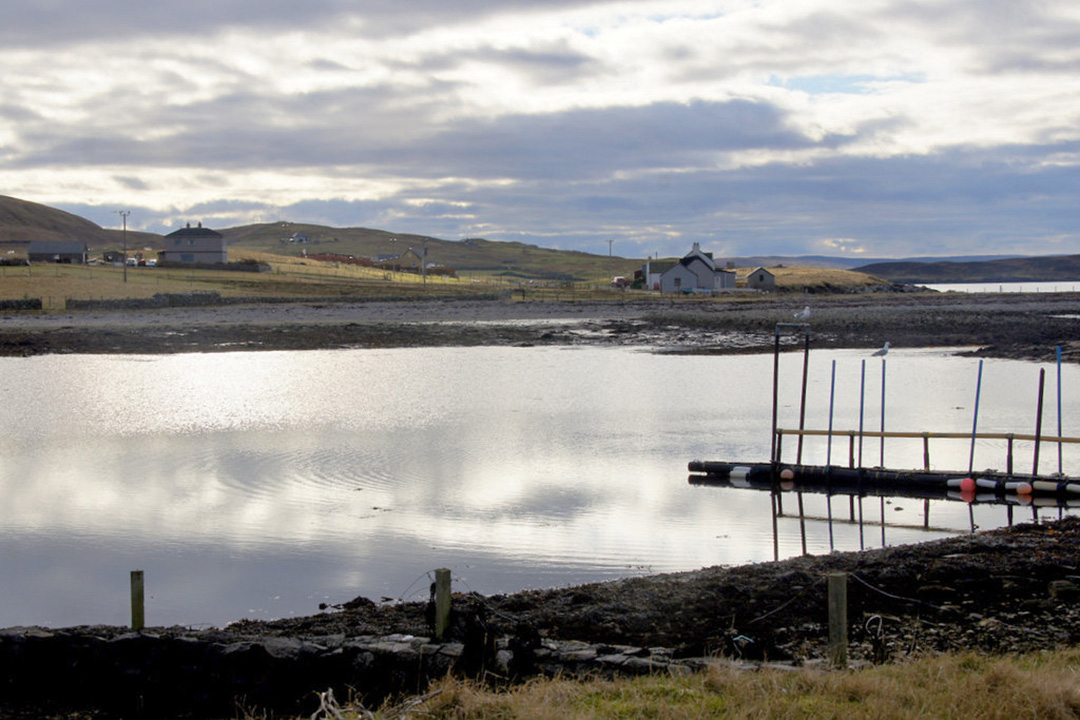
Prime birdwatching spots around Whalsay include Symbister Harbour, the Houb – a small tidal lagoon – at Kirk Ness, and at any of the islands’ various lochs. Otters can also be regularly seen around the coast of the island and around Symbister, where they have adapted to the harbour traffic, allowing for occasional close-up sightings.
Home of Scots poet Hugh MacDiarmid
In the 1930s, Whalsay became the residence of the Scots poet Christopher Grieve, better known by his pen name, Hugh MacDiarmid. Living in the croft house known as Sodom (from the Old Norse suðr-heimr, meaning ‘southerly homestead’) with his wife Valda and son Michael, MacDiarmid was regarded as an eccentric by the islanders, though his family was well-liked.
Despite his poverty and frequent illness, MacDiarmid produced some of his finest work during his time on Whalsay, including the renowned poem ‘On a Raised Beach’. His stay on the island lasted from 1933 until 1942, when he was called up for war work and never returned.
MacDiarmid’s former home previously served as a camping böd, the Grieves House böd, and was operated by the Shetland Amenity Trust, however it has been closed for maintenance as of 2022.
How do you get to Whalsay?
After reaching Shetland from the Scottish Mainland with NorthLink Ferries, to get to Whalsay you’ll need to take another ferry from the Shetland Mainland.
The inter-island ferry departs from the Laxo Ferry Terminal on the Shetland mainland and occasionally from Vidlin in certain weather conditions. The crossing from Laxo to Symbister takes around 30 minutes, and it makes the journey to and from Whalsay multiple times per day. It carries foot passengers and vehicles, and should be booked in advance, particularly during busy summer months.
The ferries to Whalsay are operated by Shetland Islands Council.
 By Amy Leith
By Amy LeithBorn and raised in Aberdeen with an admiration for Orkney and Shetland, loves to travel and visit new places, enjoys cooking, always listening to music, spends a little too much time on TikTok.
Pin it!